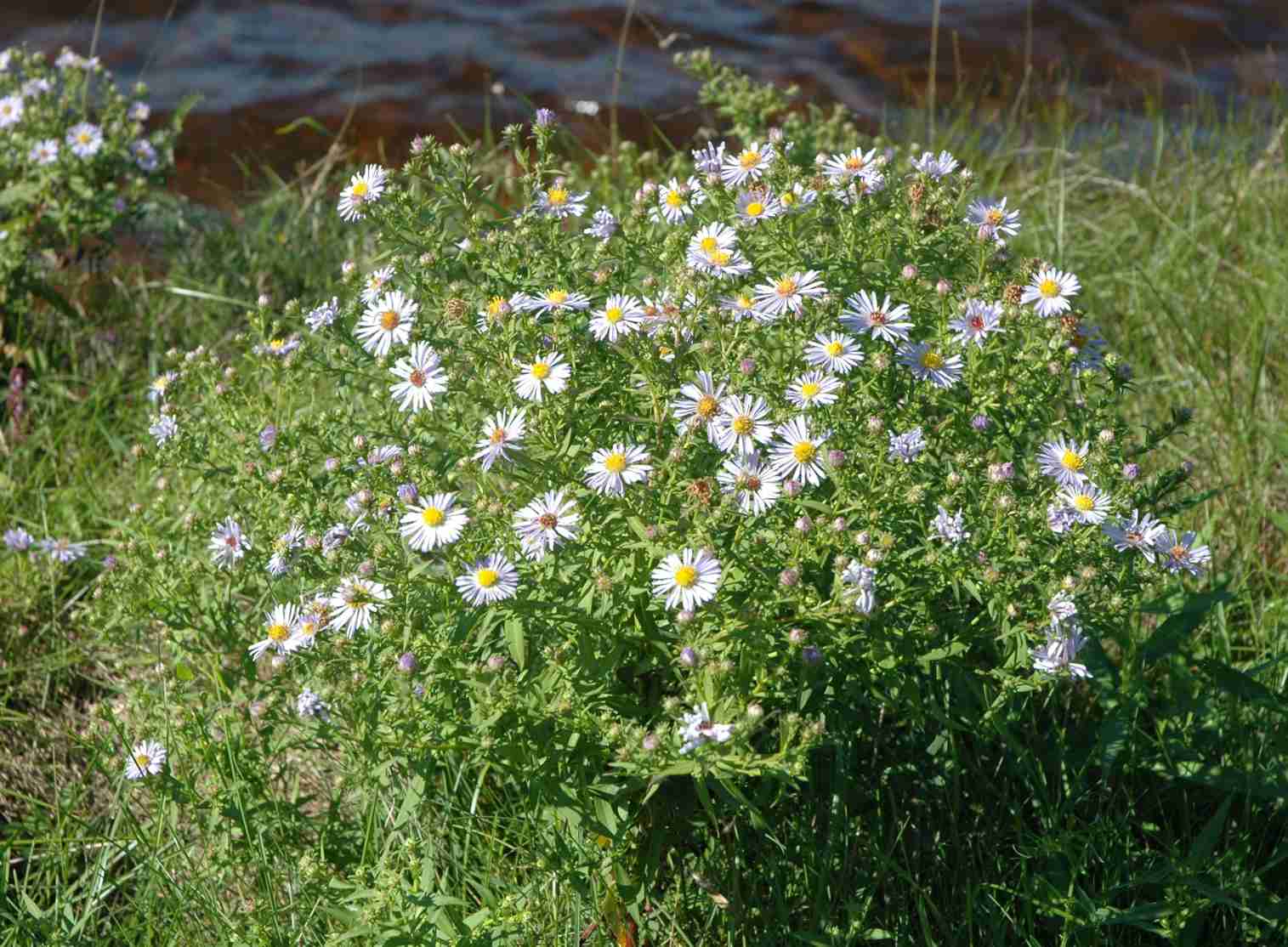New York Aster

Symphyotrichum novi-belgii (L.) Nesom is the type species of the genus and is native to eastern Canada and the eastern US from Maine and New York south to South Carolina near the coast and sometimes inland in wetter soils. The species has been divided into several varieties plus numerous named cultivars (Labrecque & Brouillet 1996; Brouillet et al. 2006). In Europe, the species has established itself as a mixture of escaped garden forms some similar to plants in North America and some likely the result of some intergression from other garden grown species, e.g. Sym. lanceolatum (Hrabovský et al. 2025). Cultvars of the species are sold as either "Aster novi-belgii" with dwarf forms incorrectly as "Aster dumosus" (simply short-stemmed Sym. novi-belgii). The species has been reported multiple times to be hexaploid 2n=48 thoughout its range.
Proximal stems uniformly and densely hirsute; Maine, New Brunswick, and adjacent Quebec
Symphyotrichum novi-belgii var. villicaule
Proximal stems glabrous or slightly hirsute in lines
Leaves: lengths 4–5 times widths, bases strongly clasping; plants robust, compact; New Brunswick
Symphyotrichum novi-belgii var. crenifolium
Leaves: lengths 7–10+ times widths, bases ± clasping or subclasping; plants slender to ± compact
Leaves lance-ovate or lanceolate to oblanceolate, lengths less than 10 times widths, bases ± clasping
Symphyotrichum novi-belgii var. novi-belgii
Leaves linear-lanceolate, lengths more than 10 times widths, bases subclasping
Symphyotrichum novi-belgii var. elodes
Brouillet, L., J.C. Semple, G.A. Allen, K. Chambers and S. Sundberg. 2006. Symphyotrichum Nees. pp. 465-539. In Flora North America Editorial Committee, eds. Flora of North America. Vol. 20. Asteraceae, Part 2. Astereae and Senecioneae. Oxford University Press, New York.
Hrabovský, M. L. Mártonfiová, M. Michalová, and T. Miháliková. 025. Cytogeography of alien Symphyotrichum species in the Pannonian region. Bot. J. Linn. Soc. 20: 1-12.
Labrecque, J. and L. Brouillet. 1996. Biosystématique du complexe de l’Aster novi-belgii (Asteraceae: Astereae) au Québec. Canad. J. Bot. 74: 162–188.
Last revised 13 May 2025 by J.C. Semple
© 2025 J.C. Semple, including all photographs unless otherwise indicated.
1-8. Symphyotrichum novi-belgii. 1. Habit var. elodes, Nova Scotia. 2. Habit var. elodes, Semple 11535, New Brunswick. 3. Plants on rocks, New Brunswick. 4. Cultivar, Waterloo, Ontario. 5. Lower to upper stem leaves. 6. Florets, cultivar "Patricia Ballard", Waterloo, Ontario. 7. Involucre of white rayed cultivar, Waterloo, Ontario. 8. Dwarf cultivar "dumosus", Waterloo, Ontario.















